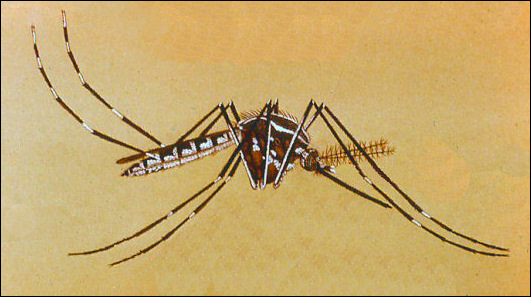

As global warming continues, the chances of primarily tropical diseases working their way into northern Mexico and the southern United States increase. Many of the most important tropical and semi-tropical diseases of humans are carried by mosquitos. These include malaria, yellow fever, and dengue fever. The latter two are viral diseases that have been increasing in recent years because of lapsing mosquito control efforts and the widespread movement of infected people from region to region.
Dengue fever is considered the worst of the mosquito-borne viral
diseases, and a preferred host, Aedes aegypti, is present throughout most of the
southeastern United States, and South Texas has had cases of dengue in recent years.
What's our chances in the United States portion of the northern Chihuahuan Desert?
For the time being, probably relatively low, what with the arid climate and with most
cases still limited to south of the border. But animals, including mosquitos, are on
the move. And as long as we carelessly leave containers of water around in the
outdoors, we might as well put up signs: "Mosquitos Welcome!"

Contributor: Arthur H. Harris, Laboratory for Environmental Biology, Centennial Museum, University of Texas at El Paso.
Desert Diary is a joint production of the Centennial Museum and KTEP National Public Radio at the University of Texas at El Paso.

An image of the preferred host genus (Aedes) of the dengue fever virus. Image adapted from a Centers for Disease Control image.